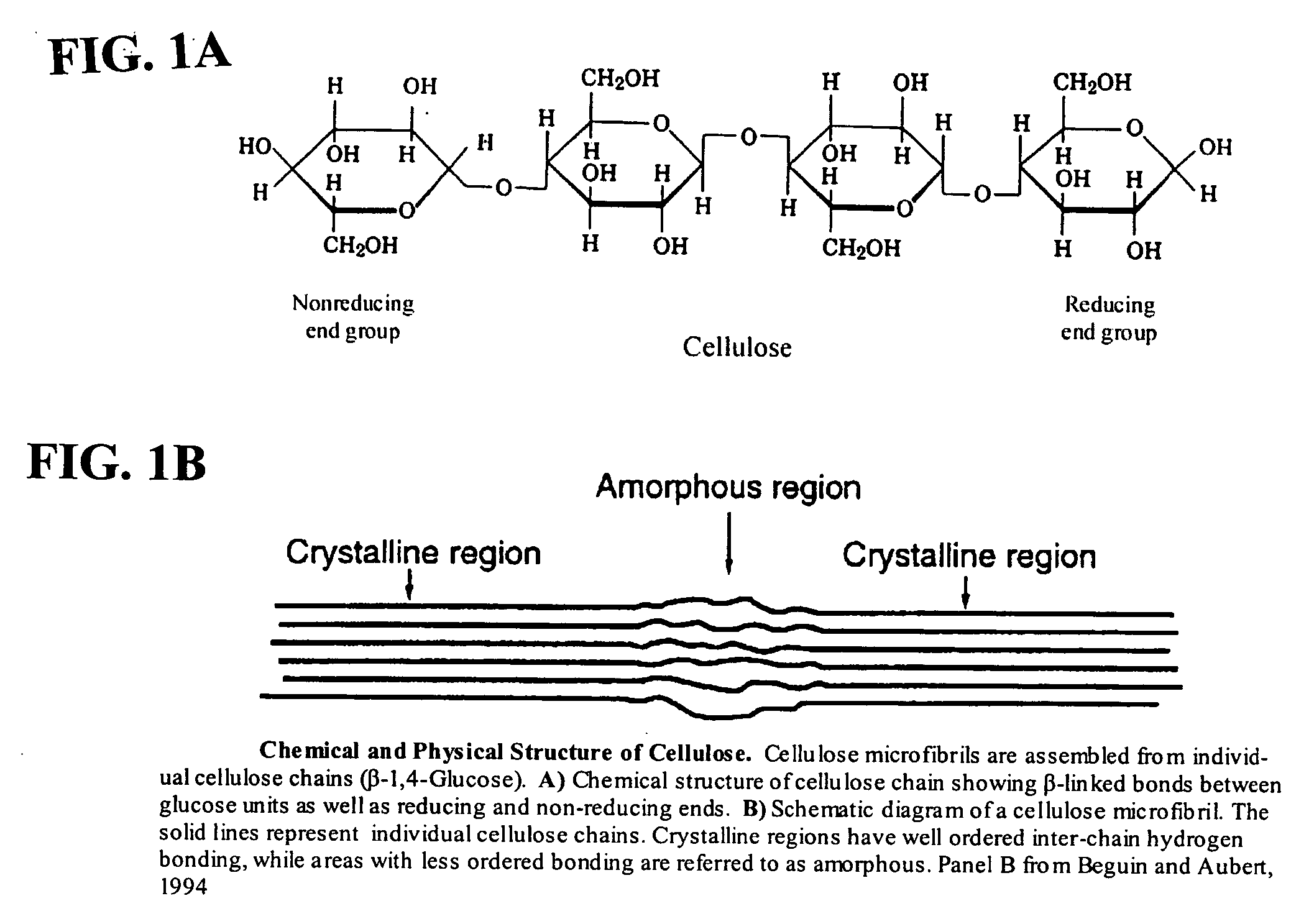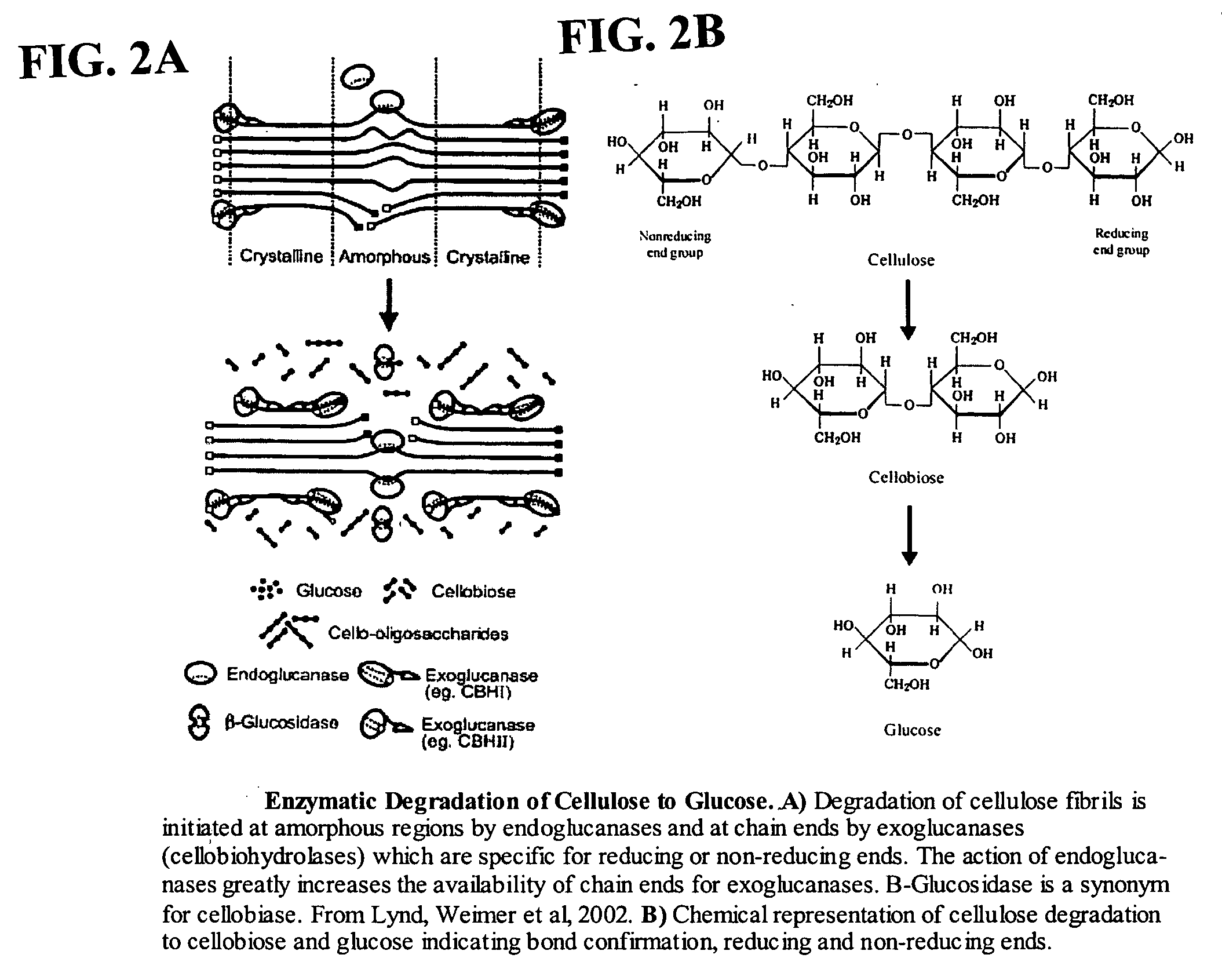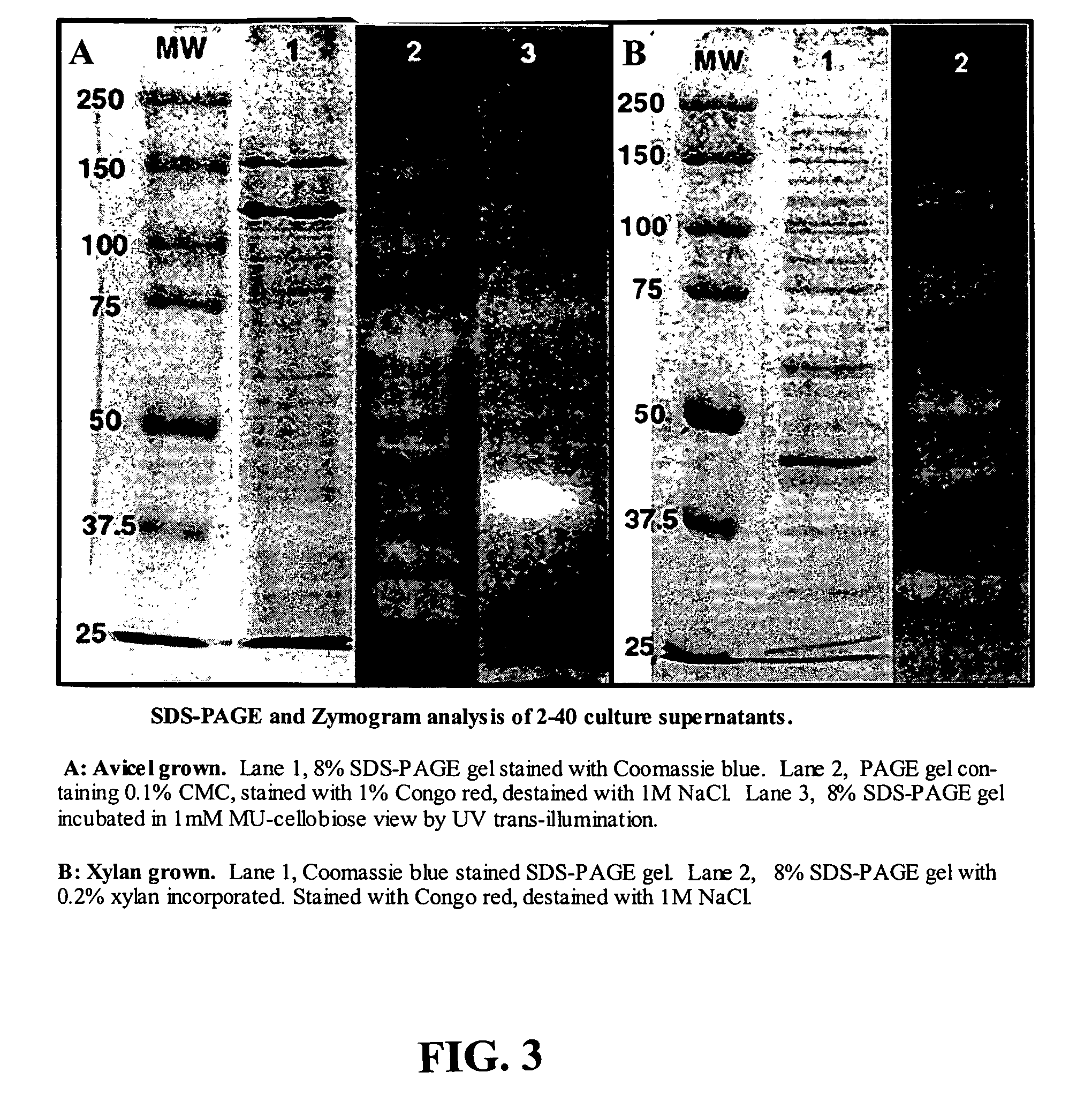Plant wall degradative compounds and systems
a technology of plant wall degradation and compounds, applied in the field of degradative enzymes and systems, can solve problems such as difficulty in breaking down
- Summary
- Abstract
- Description
- Claims
- Application Information
AI Technical Summary
Benefits of technology
Problems solved by technology
Method used
Image
Examples
Embodiment Construction
[0032] Analysis of the genome sequence of S. degradans 2-40 reveals an abundance of genes coding for enzymes that are predicted to degrade plant-derived carbohydrates. To date, 2-40 is the only sequenced marine bacterium with apparently complete cellulase and xylanase systems, as well as a number of other systems containing plant-wall active carbohydrases.
[0033] Thus it appears that 2-40 can play a significant role in the marine carbon cycle, functioning as a “super-degrader” that mediates the breakdown of CP from various algal, plantal, and invertebrate sources. The remarkable enzymatic diversity, novel surface features (ES), and the apparent localization of carbohydrases to ES make S. degradans 2-40 an intriguing organism in which to study the cell biology of CP metabolism and surface enzyme attachment.
[0034] It has now been discovered that 2-40 has a complete complement of enzymes, suitably positioned, to degrade plant cell walls. This has been accomplished by the following app...
PUM
| Property | Measurement | Unit |
|---|---|---|
| Affinity | aaaaa | aaaaa |
| Environmental properties | aaaaa | aaaaa |
Abstract
Description
Claims
Application Information
 Login to View More
Login to View More - R&D
- Intellectual Property
- Life Sciences
- Materials
- Tech Scout
- Unparalleled Data Quality
- Higher Quality Content
- 60% Fewer Hallucinations
Browse by: Latest US Patents, China's latest patents, Technical Efficacy Thesaurus, Application Domain, Technology Topic, Popular Technical Reports.
© 2025 PatSnap. All rights reserved.Legal|Privacy policy|Modern Slavery Act Transparency Statement|Sitemap|About US| Contact US: help@patsnap.com



